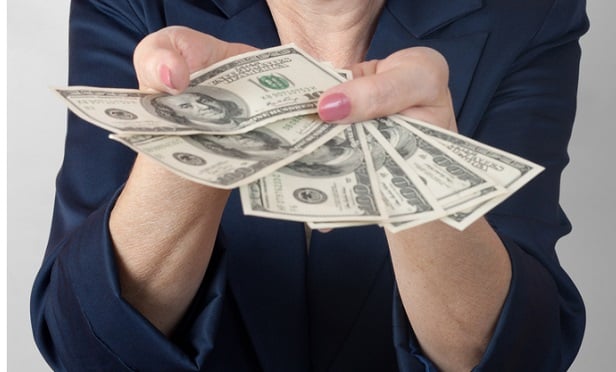 This heightened awareness of sexual harassment comes with tradeoffs: 60 percent of male managers said they are uncomfortable mentoring, socializing with or even working alone with women in the workplace. (Photo: Shutterstock)
This heightened awareness of sexual harassment comes with tradeoffs: 60 percent of male managers said they are uncomfortable mentoring, socializing with or even working alone with women in the workplace. (Photo: Shutterstock)
The beginning of the #MeToo movement in the fall of 2017 was a watershed moment for the issue of workplace sexual harassment. Over the past 18 months, awareness has increased, complaints to the U.S. Equality Opportunity Employment Commission (EEOC) have risen and many employers have enacted or updated workplace policies.
Most people agree the movement was long overdue. But has the pendulum now swung too far in the other direction?
“I think there is good and bad,” said Denise Dudley, a behavioral psychologist and speaker in Southern California who wrote the book “Work It! Get In, Get Noticed, Get Promoted”. “We certainly have a heightened sense of what sexual harassment is. We understand now that it's not just a man saying something as a woman walks by on the way to a meeting. It's other things, too.
Related: New York and California take the lead on sexual harassment training. Who will follow?
“Title VII of the Civil Rights Act, which has been out since 1964, says that sexual harassment has to be something that is unwelcome, severe and pervasive. How many times did it happen?”
EEOC statistics for fiscal year 2018 reveal how much things have changed in the #MeToo era:
- The agency received 7,609 complaints, which was a 13.6 percent increase from the previous year.
- Overall, workers filed 76,418 workplace harassment complaints of all types.
- Nearly $70 million was recovered for complainants, up from $47.5 million a year earlier.
- Women accounted for around 85 percent of sexual harassment complaints.
This heightened awareness, however, comes with tradeoffs. Sixty percent of male managers said they are uncomfortable mentoring, socializing with or even working alone with women in the workplace, according to the website LeanIn.org. This is up 46 percent from the previous year.
“The bad thing that is happening now is that I hear all of these men saying, `I don't think I can even talk to a woman' or 'I'm not even going to have meetings with a woman in my office, because she's going to say I harassed her',” Dudley said. “None of that would be sexual harassment unless you did something severe or kept coming on to somebody.” Most employers likely are aware of the potentially high cost of workplace harassment.
“If you get slammed with even one sexual harassment lawsuit, even if you have insurance, I guarantee that you and your HR department will spend a lot of time on it,” Dudley said. “It costs you in time and people if you any type of complaint.”
Employers may be less aware of other costs.
“There is a real cost, but there also are hidden costs that might not surface for a while,” she said. “What I see is organizations not wanting to hire other organizations that have bad reputations in this area. First, if you are a decent person, you wouldn't want to support someone who isn't decent. Second, they don't want their own reputation tarnished. “The Internet and Twitter have changed so many things. Your workers can head to the breakroom and say, `Guess what my supervisor just said about me” and post it on Glassdoor or wherever. That can be either good or bad.”
What practical steps should employers take to ensure they are doing the right thing, both legally and from a human perspective? Dudley makes these recommendations:
Consider all employees. “We need to get around to understanding that the #MeToo movement is good for men, too. How did we get on the opposite team here? My male friends are decent enough to know that sexual harassment prevention training is good for everyone, including men. The good part is that we are aware of it and have created vehicles by which anyone who is being harassed can actually have a voice to register a complaint or observation without fear of retaliation.”
Revisit existing policies. “Most businesses, because of all this attention, have gone back and said, 'What are our policies?' A lot of organizations are on alert and have been able to create a better system by which you can, if you have a problem, register a complaint.”
Spell it out. “It needs to be really easy to understand. Put it in plain English. Mention Title VII, which says sexual harassment is illegal under federal law. This needs to be easy for someone to read and understand. It should be posted in places where people actually congregate.”
Personalize it. “I believe organizations should write their own policy. Take the law, but make it personal: 'We here at this company do not tolerate such and such. Here is what we do.' Put it into user-friendly verbiage. If the employers wrote it, it means they understand it and endorse it rather than just putting up a poster they never read.”
Start at the top. “The leaders have to know it, endorse it and spread it. If it's a personal thing our company wrote, it implies that we all agree with this.”
The #MeToo movement set in motion a nationwide discussion and contributed to countless positive changes. The next step is to make sure that current sexual harassment policies are in place and understood by everyone to create a safe, welcoming workplace for all employees.
“My biggest takeaway right now is that everybody needs to calm down and think about treating each other with kindliness, friendliness and equality,” Dudley said. “We all need to treat each other as equals. Try to get back to an environment where we're not adversarial but all on the same team.”
Read more:
© Touchpoint Markets, All Rights Reserved. Request academic re-use from www.copyright.com. All other uses, submit a request to [email protected]. For more inforrmation visit Asset & Logo Licensing.







